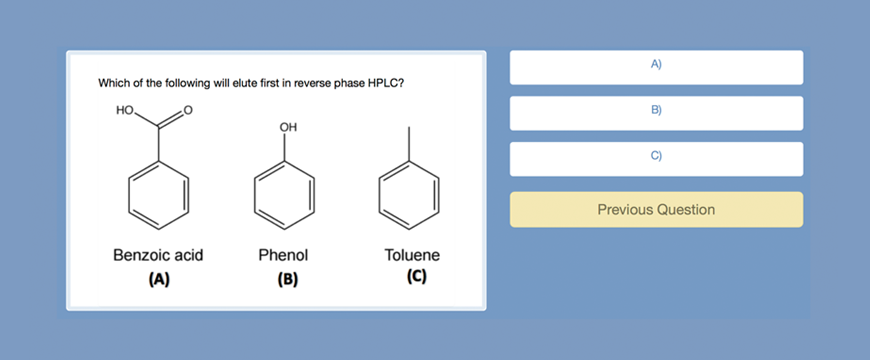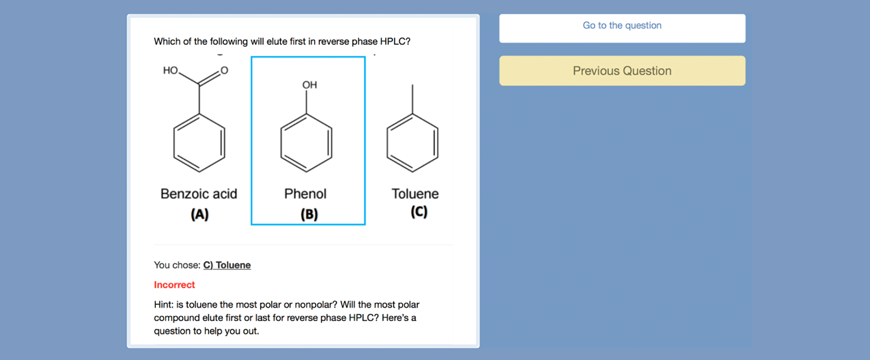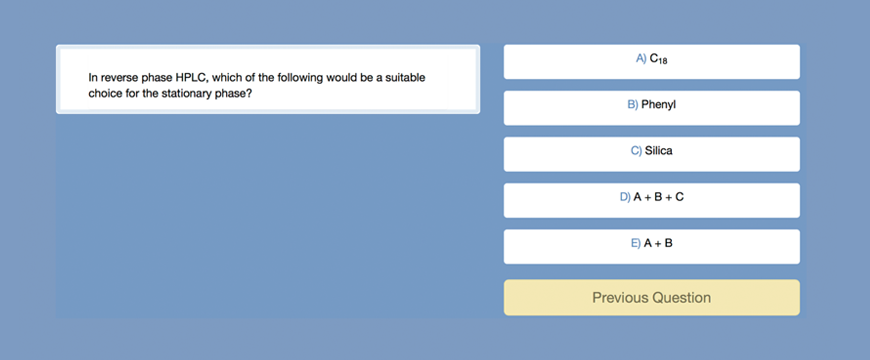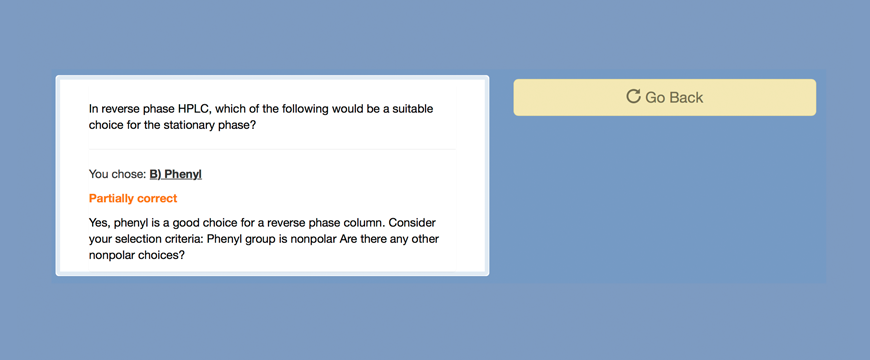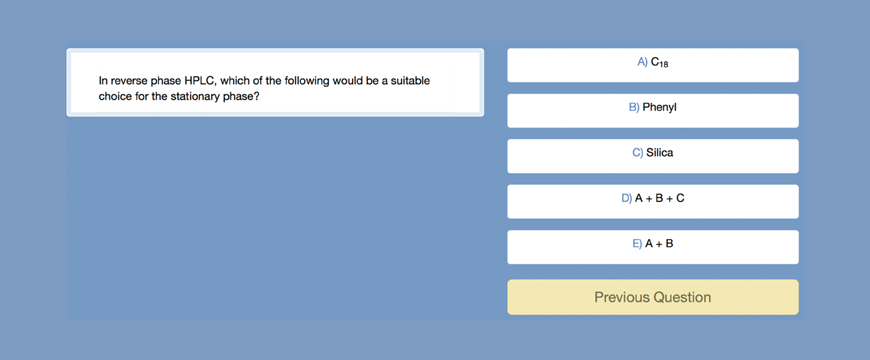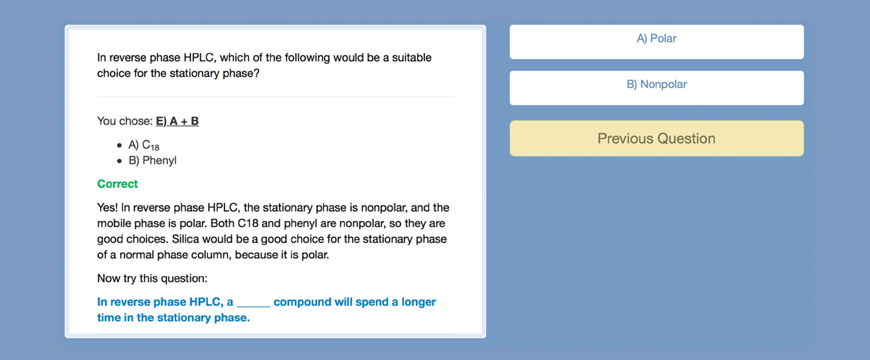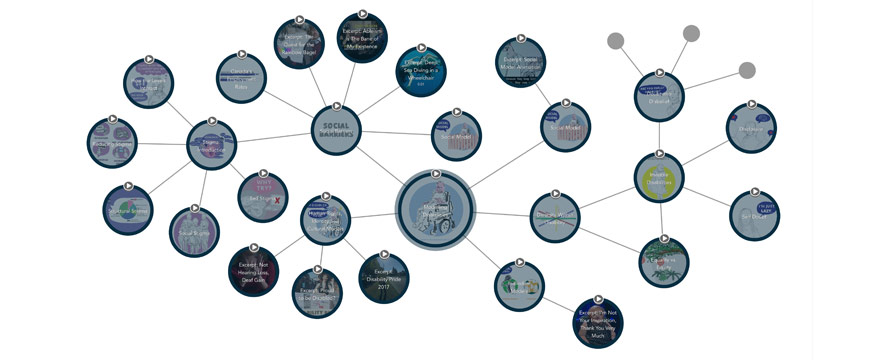How do you create a valuable learning tool for university students? One that not only makes excellent content available but is designed from the ground up to engage with its audience? Russ Algar, a faculty member from the Department of Chemistry, and Steven Barnes, a faculty member at the Department of Psychology, had to answer these questions when they decided to develop their own online learning tools for their courses. The answer: partner with students to create them.
UBC students are continually looking for opportunities to apply what they have learned in class and build on skills that will help them achieve their goals in the future. And this is what Tapestry, the project led by Barnes, and Alchemy, led by Algar, provided.
The Alchemy and Tapestry Teaching and Learning Enhancement Fund (TLEF) projects have provided authentic, creative and interdisciplinary experiences for students. From developing the code and creating the content to user testing and implementing that feedback into the final product, students have been at the forefront of these projects, not only developing their hard skills but their soft skills as well. Faculty members who lead these projects also benefit from the different perspectives, knowledge and skills that students bring, enriching the final result.
The University of British Columbia supports collaborative opportunities for faculty and students through the TLEF. The TLEF enriches student learning by supporting innovative and effective educational enhancement projects like Alchemy and Tapestry.
Personalizing student learning
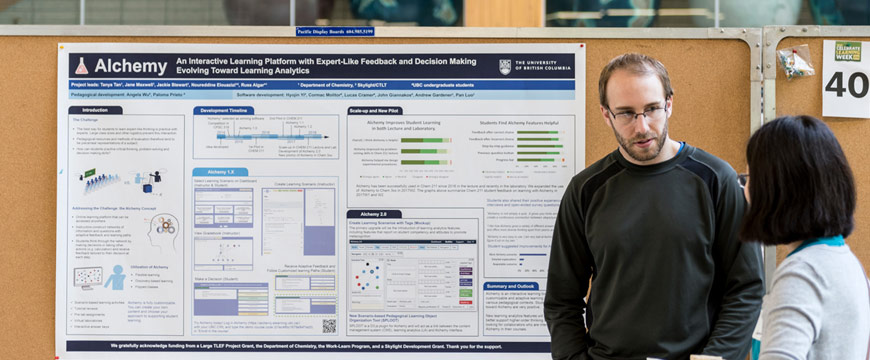
Russ Algar at the 2018 TLEF showcase
After dissatisfaction with textbook questions that did not represent real-life problems, Russ Algar set out to develop a solution with a small team of faculty and students. They devised a tool where students can practice and receive feedback on skills essential in STEM fields, such as critical thinking, decision-making, and processing skills (CTDMP skills). They developed a pedagogical method through Alchemy, an online tool where students would participate in multi-step problem-solving, make critical decisions, and link concepts together while receiving feedback.
Alchemy’s fundamental goal is to help students think more critically by assisting them to work step-by-step through the concepts they are learning. One of the tool’s most significant benefits is how it provides students with feedback based on each decision they make. The tool also supports learning analytics capabilities to assist data-enabled pedagogies that can guide teaching and learning through class metrics as well as individual student performance.
For Algar, Alchemy can “provide an online experience that is similar to what they would get if they could be in the office with an instructor working one-on-one.”
Sequence for Alchemy scenario
Students who use the tool in their courses are not the only ones benefiting from it. Through the TLEF grant, Alchemy also creates employment opportunities for students across campus.
Angela Wu, a fifth-year student double majoring in Pharmacology and English Literature, worked for a year in a work-learn position as a content creator. Her previous experience in Chem 211 helped her come up with conceptual questions as well as modules based on the course material.
“I found that the project aligned well with my professional goals. I was always interested in science education [and] communication. [Working on Alchemy] I got to learn a lot about decision-based learning and the field of education in general. I think anybody interested in education—if they want to become a teacher or go into academia—would gain a lot from this position.”
A fourth-year Mathematical Science student, Michael Zhang, has been working on Alchemy as a full-stack developer for over a year, where he codes everything from the user interface to the backend of the product. He is getting more out of the project than just enhancing his programming skills. “I’m not only benefiting from the team in terms of professional skills, [but] I’m learning a lot of communication skills by talking with different professors, with my team leaders and my colleagues. For me, it’s a unique opportunity where I can learn not only professional skills but also soft skills.”
Recent Chemistry graduate Andrew Wang also worked on the tool as a research project. He evaluated how students benefitted from the tool as well as student’s acceptance of Alchemy. Working with faculty members allowed him to understand how to analyze the data he collected and what to look at specifically.
Algar explains that students working on Alchemy are working on a project that has active users. Here “user requirements matter, usability matters, trade-offs matter, and you have to be strategic.” The Alchemy project mimics the work-place giving students first-hand experience in developing a software product using cutting-edge technology and concepts used in big companies, and that will make their resumés stand out.
Faculty members also benefit from partnering with students. Algar learned that if you are making a tool for students to use, “having students develop it, is probably one of the best things you can do. Particularly because students are intuitive with what other students are doing, what they like, and what they don’t like.”
Algar also explains how student involvement can keep instructors grounded, and not make assumptions about students’ behaviours: “[students] make sure we are designing [Alchemy] for the students and not just designing it for instructors.”
Disrupting linear learning through a connected experience
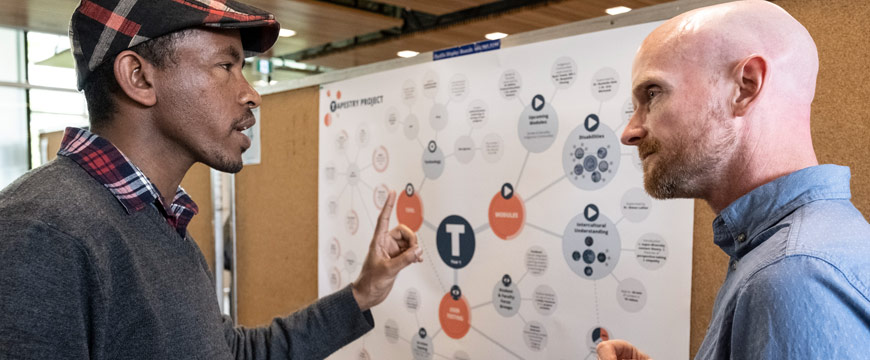
Steven Barnes at the 2019 TLEF showcase
Faculty and student partnership can also be seen through the Tapestry project, led by 3M National Teaching Fellow, Steven Barnes. Tapestry challenges the traditional linear form of learning and presents content through “nodes,” which instructors and students “can connect to other related nodes, or add additional content to” (Tapestry, 2019). Through this TLEF-funded project, students and faculty co-create content where students can make visual connections between content through video, websites, interactive widgets, etc. Hundreds of students have now used the tool in multiple Faculties and disciplines.
Steven Barnes explains that “the Tapestry tool, allows people to remix, extend, and collaborate within a non-linear multimedia framework. It seeks to enable a model for online multimedia course content that is non-linear, learner-centred, constructivist, and emphasizes content co-creation. In addition to developing the Tapestry tool interface, four modules (what we like to call ‘Tapestries’) are created that explore aspects of living in a diverse world. Our ‘Intercultural Understanding’ and ‘Disabilities’ Tapestries are complete, and our ‘Gender and Sexuality,’ and ‘Indigenous Communities’ Tapestries are in development.”
Tapestry demo on disabilities (view the interactive demo)
Student partnership in the creation of Tapestry has been at the project’s core.
“Without students contributing to the multiple pieces of the project, there is no way that the Tapestry tool would be in the great form it is now, nor would its development have progressed as quickly as it has,” Barnes says. “Students have been integral to all aspects of the Tapestry project.”
For example, Bita Jokar, a third-year Psychology student, has been working with instructors and students to understand how to improve the user experience of the tool. Through the project, she has learned “how to run an effective user experience study, a lab study and a focus group, the different practices followed in psychological research, and how to work with an eye-tracking system” amongst other things.
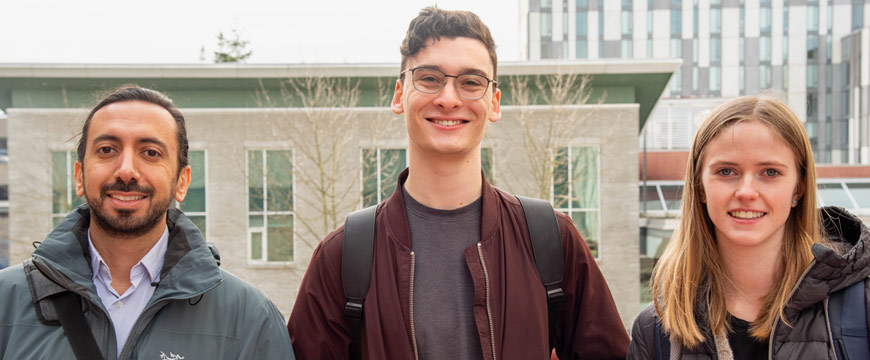
Tapestry staff member Aidin Niavarani and students Liam Armstrong and Melanie Butt
Students see the advantages of working on such projects. Bita Jokar explains how she believes that “students are benefitting by learning different skills that are necessary within the workforce as well as our studies. For example, [in my case,] the various skills essential to working in psychological research [are] analyzing data, and creating studies… as for the programmers on our projects, it is helpful for them to expand their skills while working with other developers on the team.”
Fourth-year student, Melanie Butt, is working on her Cognitive Systems degree, which is a multidisciplinary degree, including Psychology, Linguistics, Computer Science and Philosophy. Working on Tapestry has helped her bring it all together.
“Being able to put into practice that multidisciplinary piece has strengthened my love for my degree and what I’m studying and made me more confident that this is the type of work I’d like to pursue in the future…. [E]very day I sit down to work, I can feel the gears turning in my head, connecting all sorts of pieces of what I’ve been learning in class to the project itself.”
Working closely with faculty members and qualified peers enables an environment that supports growth. For Butt, working with people that “were experienced in the field of research that I could go to for expert advice was the most helpful thing.”
Students have also collaborated through the creation of the platform. Fifth-year engineering student Andrew Bui has enjoyed working on the technical aspect of the project with the web interface and other web components. Bui’s experience working on Tapestry has been “a great opportunity…. I’ve been in school for five or six years now, and there’s not a lot of opportunities like this, and I wish there would be more.”
Working on such projects also allows students to gain feedback and learn from working closely with faculty members. Recent PhD graduate, Trish Varao-Sousa, explains how working with Barnes allowed her to learn from an award-winning teaching fellow. “His passion for teaching and student engagement inspired me to take on the perspective of the user (students or faculty members) to be able to consider evaluation design better and understand the needs of the end-user.”
Creating together
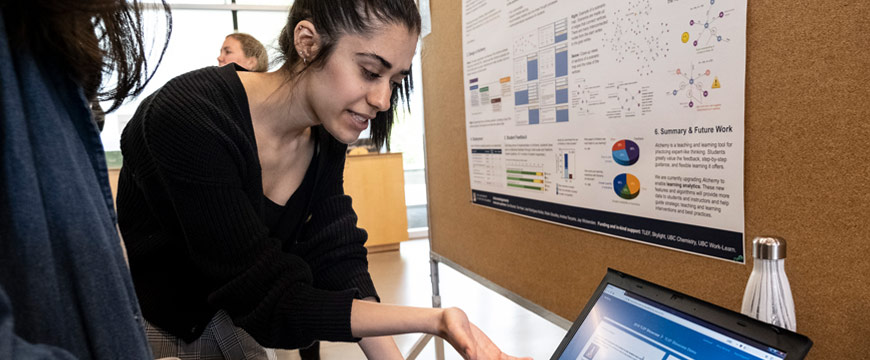
Demonstration at TLEF Showcase
For faculty members, these projects enhance student learning in multiple ways. As Algar emphasizes, “since this is a TLEF project, the goal of the funding is to help students enhance their learning. And the Alchemy project does that. Still, it’s also nice that along the way, we’re helping students in the Co-op and Work Learn program experience to learn new things and become more employable at the same time. We also know they help us make [the project] better, and it’s also rewarding to have them further develop their careers through the experience.”
Barnes finds that “in all cases, students are benefiting from being part of a multidisciplinary and highly collaborative team that encourages them to contribute to as many aspects of the project as they want to. I hope that the project has also encouraged them to think deeply about how we consume media in an educational context.”
Barnes affirms that “it has been an absolute pleasure to have partnered with such a great group of outstanding and creative students.” He encourages others to do the same, stating, “I can’t emphasize enough the value of including students in every aspect of a project.”
Resources
Tapestry
- Read the Tapestry TLEF project proposal
- Visit the Tapestry website for more information on the project
Alchemy
- Read the Alchemy TLEF project proposal
- Visit the Alchemy website for more information on the project
